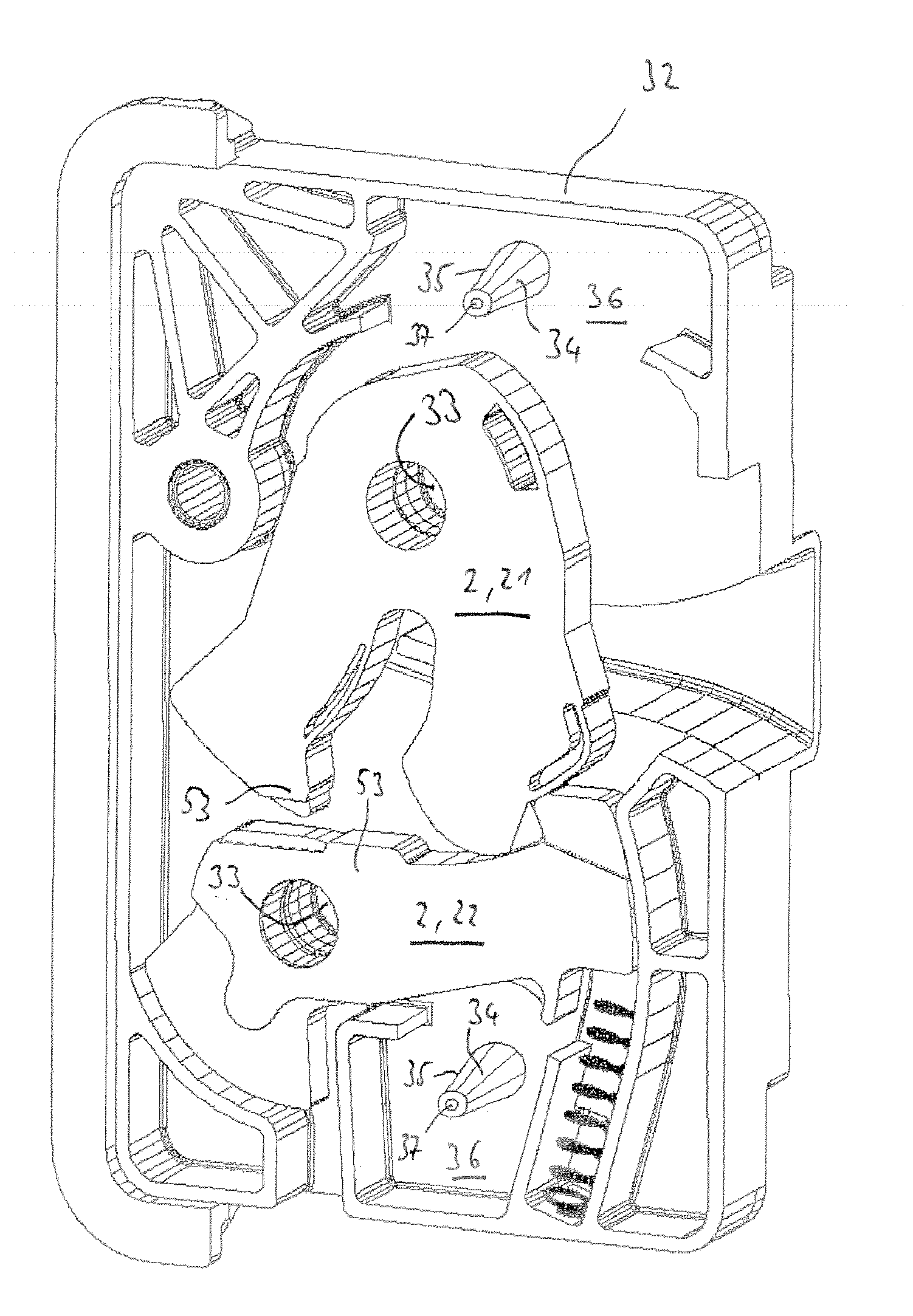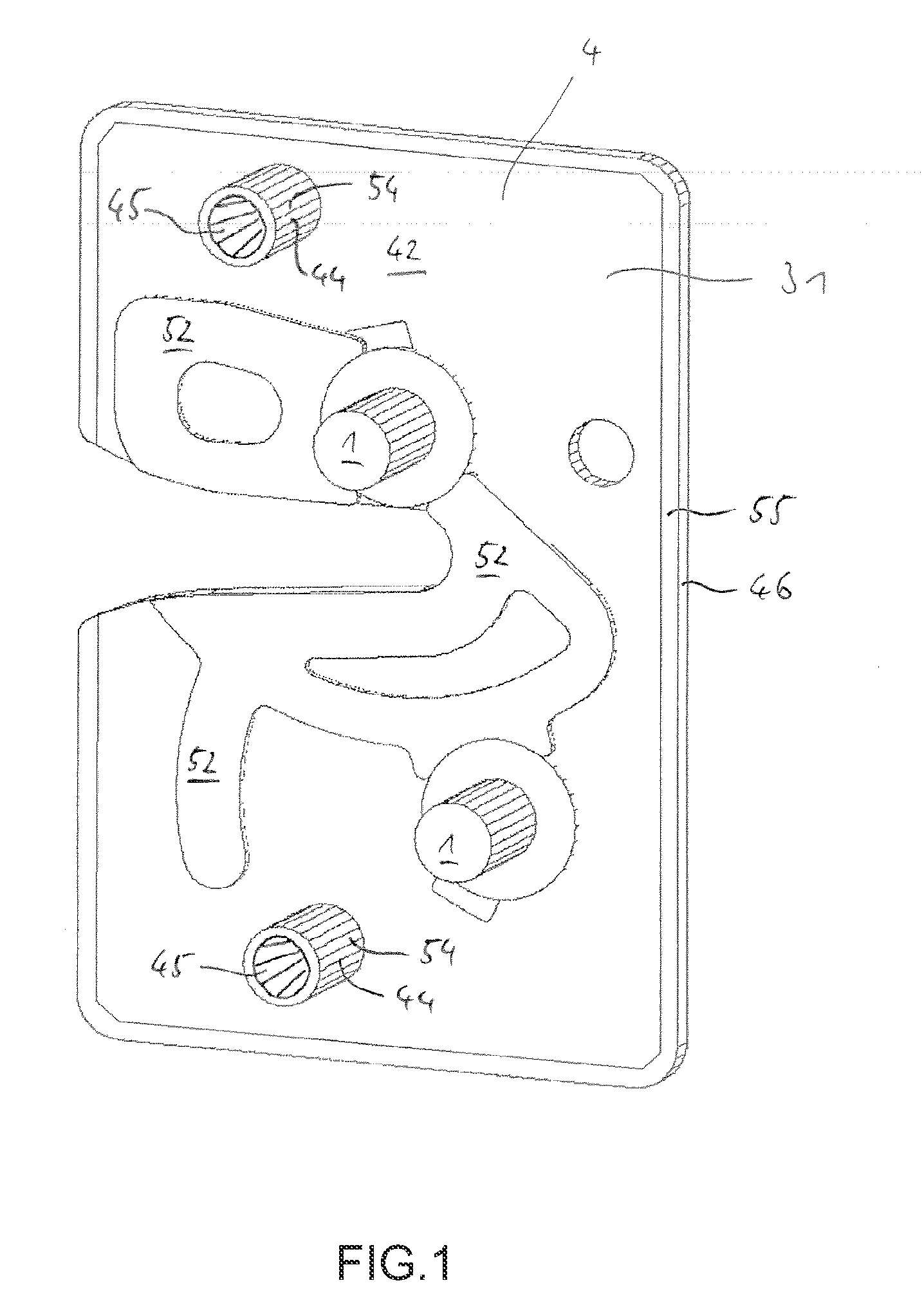Motor Vehicle Door Lock
a technology for motor vehicles and door locks, applied in the direction of lock casings, dynamo-electric machines, electrical equipment, etc., can solve the problems of generating noise and transmission onto and by the carrier plate, unable to avoid and only partially reducing the generation of noise and transmission onto the door panel
- Summary
- Abstract
- Description
- Claims
- Application Information
AI Technical Summary
Benefits of technology
Problems solved by technology
Method used
Image
Examples
Embodiment Construction
[0041]The same reference figures in the drawings refer to the same elements or elements that function in the same way.
[0042]FIG. 1 is a schematic representation of a top view from the front onto a metal carrier plate 4, in the example a frame box 31 of a motor vehicle door lock 3. Bearing rods 1 for mounting locking pieces and two dome / cone seats 44 of the invention extend vertically from the surface 42 of the carrier plate. The dome / cone seats 44 contain a funnel-shaped opening 45 for accommodating the cone-shaped dome (see FIG. 2). The dome / cone seats 44 have been formed by plastic extrusion coating 54 around through openings 43 (see FIG. 3) for a connection element and have been produced using the Outsert method.
[0043]Also a layer of plastic extrusion coating 52 was applied onto the surface of the carrier plate 4, serving partly as gliding aid and sound insulation between the locking pieces and the carrier plate.
[0044]The edge 46 of the carrier plate 4 is also covered by plastic ...
PUM
| Property | Measurement | Unit |
|---|---|---|
| forces | aaaaa | aaaaa |
| stability | aaaaa | aaaaa |
| noise reduction | aaaaa | aaaaa |
Abstract
Description
Claims
Application Information
 Login to View More
Login to View More - R&D
- Intellectual Property
- Life Sciences
- Materials
- Tech Scout
- Unparalleled Data Quality
- Higher Quality Content
- 60% Fewer Hallucinations
Browse by: Latest US Patents, China's latest patents, Technical Efficacy Thesaurus, Application Domain, Technology Topic, Popular Technical Reports.
© 2025 PatSnap. All rights reserved.Legal|Privacy policy|Modern Slavery Act Transparency Statement|Sitemap|About US| Contact US: help@patsnap.com



